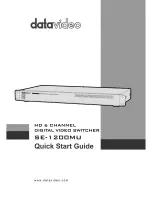
O & M Manual – Insulated Case ATS Rev: October 2020
Publication Number:
MN0100700E
Version: V10.01.20
Page 78
9.
Appendixes
9.1.
Appendix A
Tension Adjustment for Transfer Mechanism of Lake Shore Electric Transfer Switch
Refer to Figure 39 - Gear Motor Assembly (page 51).
When excess slippage occurs in the friction drive, it is necessary to increase the tension on the
friction drive shoe lining. Turn the adjustment screw (3) clockwise to increase the tension. This
action compresses the tension spring (9), and thus increases the friction. The adjustment screw
should not be tightened all the way.
Proper adjustment of the tension on the drive shoe may be set by the following method. With the
Automatic Transfer Switch in the Normal position, use a marker to make a line on the drive drum
(8) along the edge of the drive shoe (12). Transfer the switch automatically either by the Load
Test switch or interrupting the Normal source power.
After the switch has transferred to the Emergency position, observe the position of the line on the
drive drum. The line position should be approximately 1/2" to 3/4" from the edge of the drive shoe
indicating slippage. Transfer switches utilizing smaller circuit breakers are equipped with a single
friction drive arm, as they require less force to activate. On these switches an idle arm with no
adjusting screw replaces one of the drive arms. If both drive drums are used for transferring the
switch, the spring tension on the drive shoes should be adjusted equally. Please note that this is
an approximate setting, and it may be necessary to try the transfer switch several times to assure
that the adjustment is sufficient.
Do not tighten the adjustment screw to its limit as this will compress the spring entirely and cause
the operating mechanism to jam. When this happens, the gears may strip or the roll pins inside
the gearbox may shear. Sheared roll pins and/or stripped gears are indicated when the motor
operates but does not turn the drive drum. This situation can only be remedied by replacing the
motor gearbox.
Over time, the spring may lose its tension. This is indicated when the motor operates and the
drive drum turns, but the unit does not have sufficient friction to operate the circuit breakers. In
this case, the spring must be replaced with a new one.





































